-
 Bitcoin
Bitcoin $106,731.2224
-1.05% -
 Ethereum
Ethereum $2,444.9804
-1.20% -
 Tether USDt
Tether USDt $1.0003
0.01% -
 XRP
XRP $2.1882
0.09% -
 BNB
BNB $651.1435
-0.61% -
 Solana
Solana $148.3252
-2.09% -
 USDC
USDC $1.0000
0.01% -
 TRON
TRON $0.2787
0.55% -
 Dogecoin
Dogecoin $0.1598
-3.16% -
 Cardano
Cardano $0.5520
-2.43% -
 Hyperliquid
Hyperliquid $39.0960
-2.64% -
 Bitcoin Cash
Bitcoin Cash $516.9519
2.98% -
 Sui
Sui $2.7011
-2.95% -
 Chainlink
Chainlink $13.0582
-1.71% -
 UNUS SED LEO
UNUS SED LEO $8.9250
-2.53% -
 Stellar
Stellar $0.2359
-0.18% -
 Avalanche
Avalanche $17.3856
-3.73% -
 Toncoin
Toncoin $2.8095
-3.56% -
 Shiba Inu
Shiba Inu $0.0...01121
-1.95% -
 Litecoin
Litecoin $85.2795
-0.85% -
 Hedera
Hedera $0.1471
-2.15% -
 Monero
Monero $319.8004
1.12% -
 Dai
Dai $1.0001
0.01% -
 Ethena USDe
Ethena USDe $1.0001
0.02% -
 Bitget Token
Bitget Token $4.5344
-1.07% -
 Polkadot
Polkadot $3.3224
-2.96% -
 Uniswap
Uniswap $6.9697
-2.75% -
 Aave
Aave $266.1658
-2.25% -
 Pepe
Pepe $0.0...09414
-3.41% -
 Pi
Pi $0.4913
-3.29%
How to send crypto through MetaMask?
MetaMask enables sending various cryptocurrencies, but network compatibility is crucial. Double-check recipient addresses and gas fees before confirming transactions to avoid irreversible fund loss. Troubleshooting options exist for common issues like network errors and insufficient funds.
Mar 16, 2025 at 03:55 am
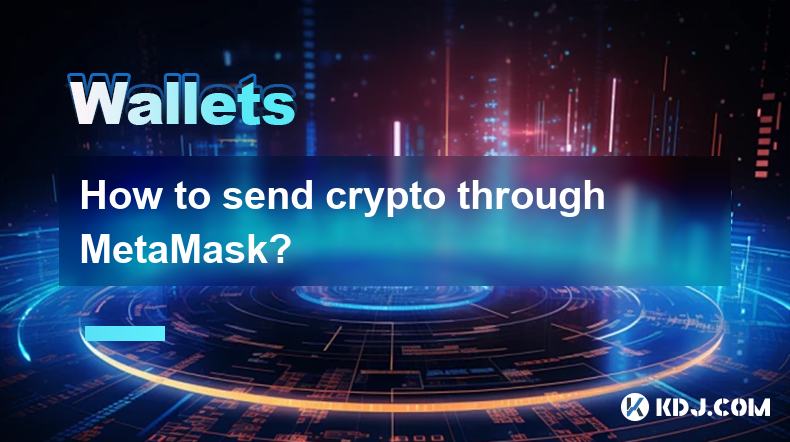
Key Points:
- MetaMask supports sending various cryptocurrencies, but compatibility depends on the network.
- The process involves selecting the token, entering the recipient's address, and confirming the transaction.
- Gas fees, network congestion, and security best practices are crucial considerations.
- Troubleshooting steps are available for common issues like insufficient funds or network errors.
How to Send Crypto Through MetaMask
MetaMask is a popular browser extension and mobile app that acts as a crypto wallet. It allows users to interact with various decentralized applications (dApps) and manage their digital assets. Sending cryptocurrency through MetaMask is a relatively straightforward process, but understanding the nuances is key to a successful transaction.
First, ensure you have the correct cryptocurrency in your MetaMask wallet. MetaMask supports a wide range of tokens, but not all networks are compatible with all tokens. Confirm that the token you wish to send is present in your wallet and that the network is selected correctly (e.g., Ethereum Mainnet, Binance Smart Chain, Polygon). Incorrect network selection is a common cause of failed transactions.
To initiate a transaction, open your MetaMask wallet and select the "Send" option. This is usually clearly marked within the interface. You'll then be prompted to enter the recipient's address. Double-check this address meticulously; sending to the wrong address results in irreversible loss of funds. After inputting the recipient's address, specify the amount of cryptocurrency you wish to send.
Next, MetaMask will display the transaction fee, also known as the "gas fee." This fee compensates miners or validators for processing your transaction on the blockchain. Gas fees vary depending on network congestion; higher congestion means higher fees. You can usually adjust the gas fee, but be aware that lower fees might result in slower transaction times or even failure. Review the details carefully before proceeding.
After reviewing the transaction details, click "Confirm." MetaMask will then prompt you to confirm the transaction via your wallet's security features, typically requiring a password or a signature using your hardware wallet (if connected). Once confirmed, the transaction will be broadcast to the network and begin processing. You can monitor its progress on a blockchain explorer using the transaction hash provided by MetaMask.
Understanding Gas Fees and Network Congestion
Gas fees are a critical aspect of sending cryptocurrency on Ethereum and many compatible networks. They're paid in the native token of the network (e.g., ETH on Ethereum). High network congestion, often caused by increased transaction volume, leads to higher gas fees. This is because miners prioritize transactions with higher gas fees. Consider waiting for periods of lower network congestion to save on fees.
Security Best Practices
Always verify the recipient's address before sending any cryptocurrency. A single incorrect character can lead to the irreversible loss of your funds. Furthermore, never share your seed phrase or private keys with anyone. These are essential for accessing your wallet and funds; their compromise would grant access to your assets. Keep your MetaMask software updated to benefit from the latest security patches.
Troubleshooting Common Issues
- Insufficient Funds: Ensure you have sufficient funds in your wallet, including enough to cover the gas fees. MetaMask will clearly indicate if you have insufficient funds.
- Network Errors: Network errors can prevent transactions from going through. Check your internet connection, and try again later. High network congestion can also cause delays or failures.
- Incorrect Network: Verify that you have selected the correct network for your cryptocurrency. Sending ETH on the wrong network will result in loss of funds.
- Transaction Pending: If a transaction is pending for an extended period, it might be due to high network congestion. Check the status on a blockchain explorer.
Frequently Asked Questions:
Q: Can I send any cryptocurrency through MetaMask?
A: MetaMask supports a wide range of cryptocurrencies, but compatibility depends on the network you're using and whether the token is supported by that network. You can only send tokens compatible with the selected network within your MetaMask wallet.
Q: What are gas fees, and how do they affect my transactions?
A: Gas fees are transaction fees paid to miners or validators for processing your transaction on the blockchain. Higher network congestion leads to higher gas fees, which directly impact the cost of your transaction.
Q: What happens if I send crypto to the wrong address?
A: Sending cryptocurrency to the wrong address results in the irreversible loss of your funds. There is no way to recover funds sent to an incorrect address. Always double-check the recipient's address before confirming the transaction.
Q: How can I monitor the status of my transaction?
A: After sending a transaction, MetaMask provides a transaction hash. You can use this hash to monitor the status of your transaction on a blockchain explorer specific to the network you used (e.g., Etherscan for Ethereum).
Q: What should I do if my transaction fails?
A: If your transaction fails, check for insufficient funds, network errors, or an incorrect network selection. If the issue persists, contact MetaMask support or consult relevant community forums for assistance. Often, waiting for network congestion to decrease can resolve pending transactions.
Disclaimer:info@kdj.com
The information provided is not trading advice. kdj.com does not assume any responsibility for any investments made based on the information provided in this article. Cryptocurrencies are highly volatile and it is highly recommended that you invest with caution after thorough research!
If you believe that the content used on this website infringes your copyright, please contact us immediately (info@kdj.com) and we will delete it promptly.
- Powell, Stablecoin Regulation, and Circle's Bold Move: A New York Minute on Crypto's Future
- 2025-07-02 02:30:12
- Ethereum Price, Tom Lee, and Bitcoin: A New Era for Crypto?
- 2025-07-02 02:30:12
- Hoskinson, Ripple, Cardano DeFi: A New Era of Collaboration?
- 2025-07-02 02:35:12
- BlockDAG, ALGO, and the Crypto Trends Shaping 2025
- 2025-07-02 01:50:12
- Cold Wallet, Token, Gains: Is CWT the Smartest Crypto Move?
- 2025-07-02 01:10:12
- Pi Coin's Rocky Ride: Support Levels, Recovery Timeline, and What the Experts Are Saying
- 2025-07-02 01:10:12
Related knowledge
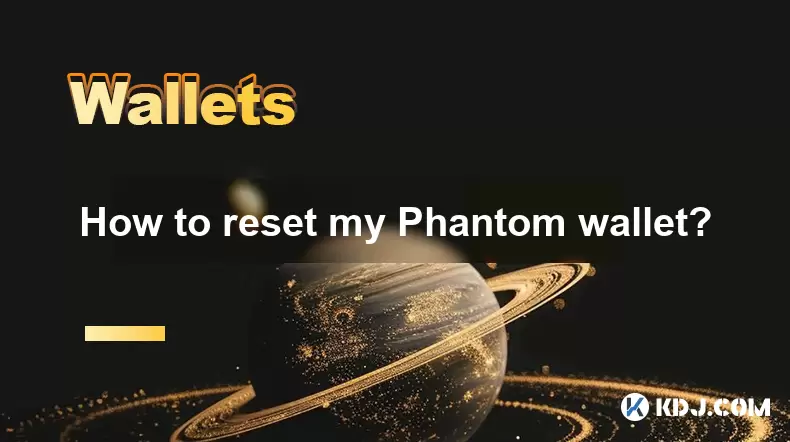
How to reset my Phantom wallet?
Jul 02,2025 at 12:36am
Understanding the Need for Resetting Your Phantom WalletIf you're using a Phantom wallet, you may encounter situations where resetting your wallet becomes necessary. This could be due to forgotten passwords, seed phrase issues, or account corruption. Phantom is a non-custodial wallet primarily used for interacting with the Solana blockchain, and it stor...
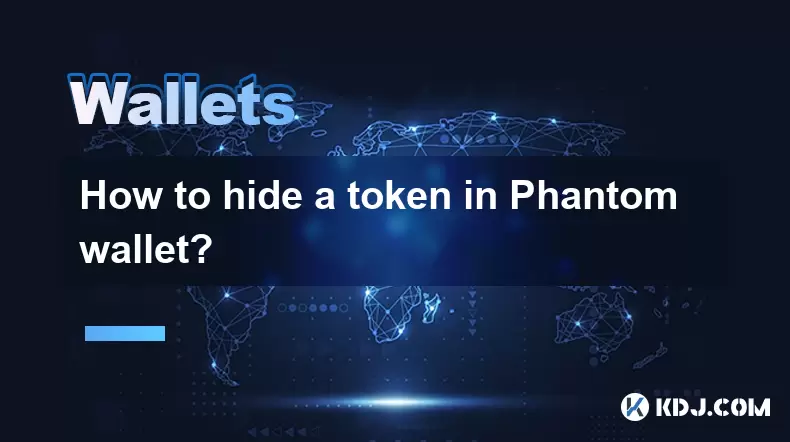
How to hide a token in Phantom wallet?
Jul 01,2025 at 05:49pm
Understanding the Phantom Wallet InterfacePhantom wallet is a popular non-custodial wallet used primarily for interacting with the Solana blockchain. It allows users to store, send, receive, and manage various tokens, including both fungible and non-fungible tokens (NFTs). Before attempting to hide a token, it's essential to understand how the wallet in...
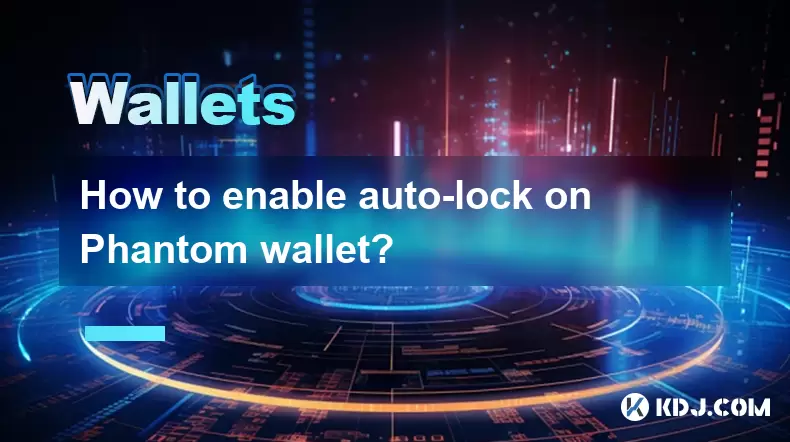
How to enable auto-lock on Phantom wallet?
Jul 01,2025 at 04:01pm
What is Auto-Lock in Phantom Wallet?Phantom wallet is a popular non-custodial cryptocurrency wallet used primarily for interacting with the Solana blockchain. One of its security features includes the ability to set an auto-lock timer, which ensures that the wallet locks itself automatically after a period of inactivity. Auto-lock enhances security by p...
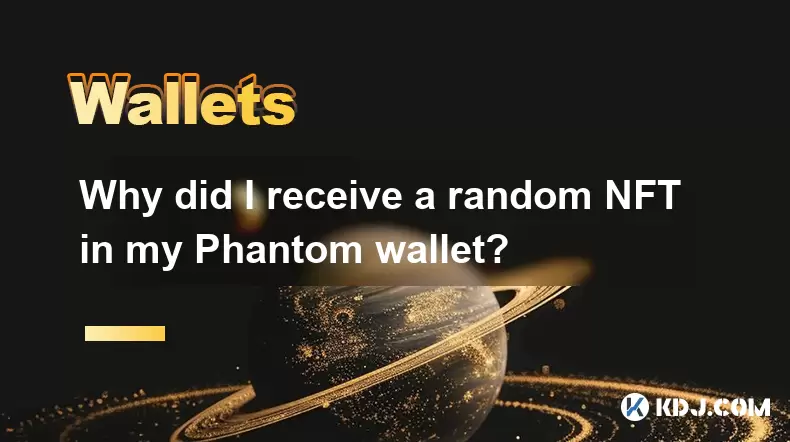
Why did I receive a random NFT in my Phantom wallet?
Jul 01,2025 at 09:00pm
Receiving an Unexpected NFT in Your Phantom WalletIf you've recently opened your Phantom wallet and noticed an unfamiliar NFT appearing in your collection, you're not alone. Many users have reported receiving random or unsolicited non-fungible tokens, often without any prior interaction with the project or sender. This phenomenon has become increasingly...
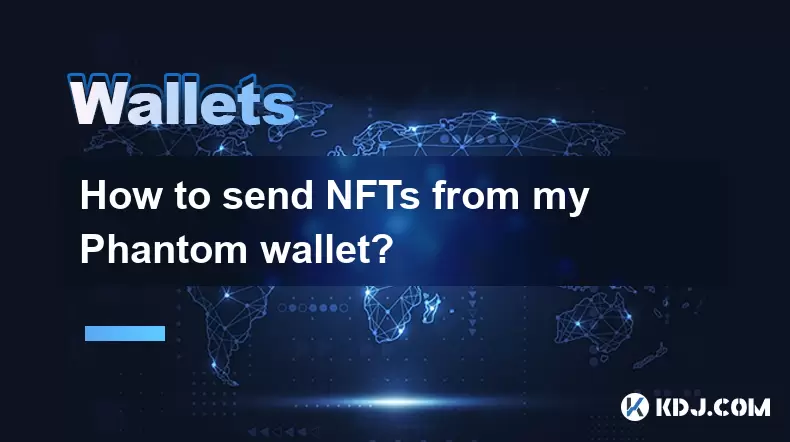
How to send NFTs from my Phantom wallet?
Jul 02,2025 at 03:15am
What is Phantom Wallet and Why Use It for NFT Transfers?Phantom wallet is a non-custodial cryptocurrency wallet primarily used for interacting with the Solana blockchain. It supports both tokens and NFTs, making it a popular choice among users who engage in decentralized finance (DeFi) or digital collectibles. The interface is user-friendly, allowing ev...
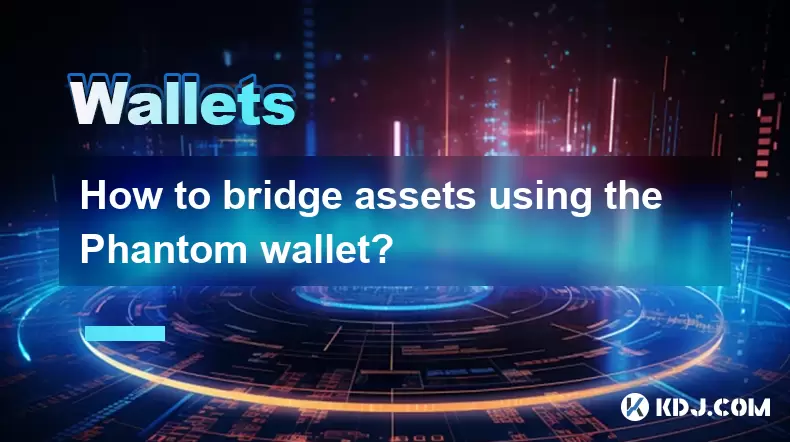
How to bridge assets using the Phantom wallet?
Jul 02,2025 at 02:50am
Understanding the Basics of Asset BridgingAsset bridging refers to the process of transferring digital assets from one blockchain network to another. This functionality is crucial in a multi-chain ecosystem where users may need to move tokens between different networks for various purposes, such as accessing decentralized applications (dApps), participa...

How to reset my Phantom wallet?
Jul 02,2025 at 12:36am
Understanding the Need for Resetting Your Phantom WalletIf you're using a Phantom wallet, you may encounter situations where resetting your wallet becomes necessary. This could be due to forgotten passwords, seed phrase issues, or account corruption. Phantom is a non-custodial wallet primarily used for interacting with the Solana blockchain, and it stor...

How to hide a token in Phantom wallet?
Jul 01,2025 at 05:49pm
Understanding the Phantom Wallet InterfacePhantom wallet is a popular non-custodial wallet used primarily for interacting with the Solana blockchain. It allows users to store, send, receive, and manage various tokens, including both fungible and non-fungible tokens (NFTs). Before attempting to hide a token, it's essential to understand how the wallet in...

How to enable auto-lock on Phantom wallet?
Jul 01,2025 at 04:01pm
What is Auto-Lock in Phantom Wallet?Phantom wallet is a popular non-custodial cryptocurrency wallet used primarily for interacting with the Solana blockchain. One of its security features includes the ability to set an auto-lock timer, which ensures that the wallet locks itself automatically after a period of inactivity. Auto-lock enhances security by p...

Why did I receive a random NFT in my Phantom wallet?
Jul 01,2025 at 09:00pm
Receiving an Unexpected NFT in Your Phantom WalletIf you've recently opened your Phantom wallet and noticed an unfamiliar NFT appearing in your collection, you're not alone. Many users have reported receiving random or unsolicited non-fungible tokens, often without any prior interaction with the project or sender. This phenomenon has become increasingly...

How to send NFTs from my Phantom wallet?
Jul 02,2025 at 03:15am
What is Phantom Wallet and Why Use It for NFT Transfers?Phantom wallet is a non-custodial cryptocurrency wallet primarily used for interacting with the Solana blockchain. It supports both tokens and NFTs, making it a popular choice among users who engage in decentralized finance (DeFi) or digital collectibles. The interface is user-friendly, allowing ev...

How to bridge assets using the Phantom wallet?
Jul 02,2025 at 02:50am
Understanding the Basics of Asset BridgingAsset bridging refers to the process of transferring digital assets from one blockchain network to another. This functionality is crucial in a multi-chain ecosystem where users may need to move tokens between different networks for various purposes, such as accessing decentralized applications (dApps), participa...
See all articles

























































































